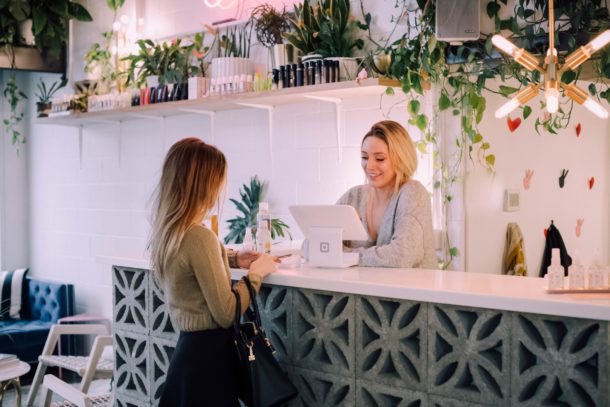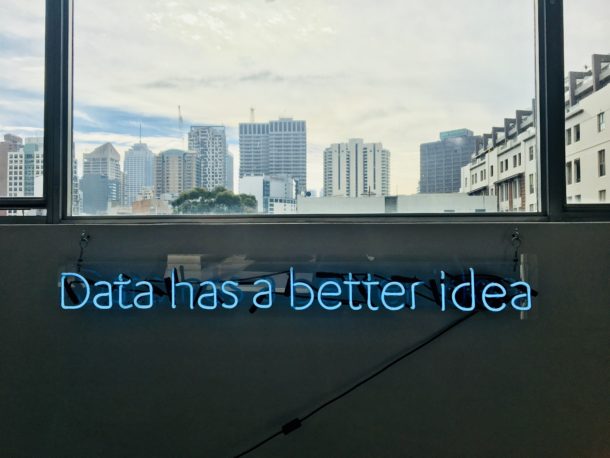Merchandising is constantly evolving to cater to the ever-changing preferences of consumers. In the ‘Digital Age’ it has tremendous influence over how a brand is perceived, who receives branded advertisements, and overall customer experience. Both on and offline merchandising efforts have to be strategic — are you putting your product in front of the right person? As sales become more reliant on advancements in technology, data, and convenience (like ecommerce), industries see a shift in merchandising efforts. This shift has driven innovation, customization, and deeper customer focus.
Everything from transactional social media to geofencing technology has become pivotal in merchandising. With the help of data and advanced technology, companies are recognizing consumer shopping patterns or even driving patterns to grab the attention of the right person. What are the hottest trends in online merchandising? Check out Array’s tips on how to utilize merchandising strategies to help your business accelerate sales!
Emphasis on In-Store Experience
Consumers are becoming increasingly focused on personalized experiences. Offering tailored experiences in-store leads to an increase in brand loyalty, and overall revenue, says Forbes. Packaging is the first impression of a brand. It’s an ideal way to show a brand’s personal style through the use of bold colors or modernized designs. By having a clear message combined with a streamlined cohesive look, customers can easily spot products on the shelves.
 Social Media
Social Media
Social media plays a vital role in mobile merchandising. Utilizing various platforms provides opportunities for businesses to give their brand a voice and style, and offer an opportunity for engagement. Whether a post showcases product packaging or an account receives a product review from users, social media is a key tool in the merchandising mix. At Array, we see the importance of social media and the potential for growth in both brand awareness and sales. Platforms can be used to drive users to product websites or other ecommerce sites (ie. Amazon) — it’s all about bringing traffic to the desired landing page. Social even provides purchasing capabilities on sites such as Instagram and Pinterest. If a user sees a picture with products they like, they can simply click the product image to view purchasing options.
 Video Content
Video Content
Utilizing video content is one of the most effective ways to engage users on social media and business websites. According to Small Business Trends, 70% of marketers agree that video produces more conversions than any other type of content. We create moving graphics and videos for Array client platforms to grab the attention of users. Consumers view and respond to different forms of content- by diversifying posts on social media pages businesses can extend their engagement to a wider group of users. Videos are exceptional in the way that they spark curiosity amongst users. “Video generates 12 times more shares than text and images combined,” says Small Business Trends. How-to videos are great for attracting users and are especially beneficial to companies because they can teach the application of a product. Live-streaming on platforms like Facebook and Instagram are unique opportunities because they give users a direct way to engage with the brand. Businesses can interact with user’s comments immediately or even address them in their live streams.
 Data is Key
Data is Key
Data is a buzzword these days, isn’t it? And for good reason! Data allows businesses to create effective strategies equipped with evidence of what actually works to drive growth. Data empowers companies to reflect consumer preferences into their merchandising strategy. According to Econsultancy, businesses with several locations can analyze consumer buying patterns of products and adjust merchandising efforts to fit specific geographic areas. This can be seen in trends like Geofencing, using the location of consumers to position digital advertisements in front of those within a certain distance of a store. Ads for nearby businesses can be placed in front of consumers who are within the “geofence” or predetermined boundary of businesses. The idea behind this concept is that these efforts will increase the likelihood of consumers entering brick and mortar stores. Customer purchasing decisions directly reflect what is stocked in specific locations. At Array, we see the value in data and use research and analysis as the foundation of our merchandising recommendations.
Merchandising is one of the most impactful aspects of increasing purchase conversion both on and offline. There are an abundance of effective ways to draw attention to your product – it’s all about choosing the right ones! Let Array help you, contact us today and get a FREE merchandising audit.
Sources: Absolunet, Compliant IA, Bizfluent, LYFE Marketing, Retail Dive, Sales & Orders
